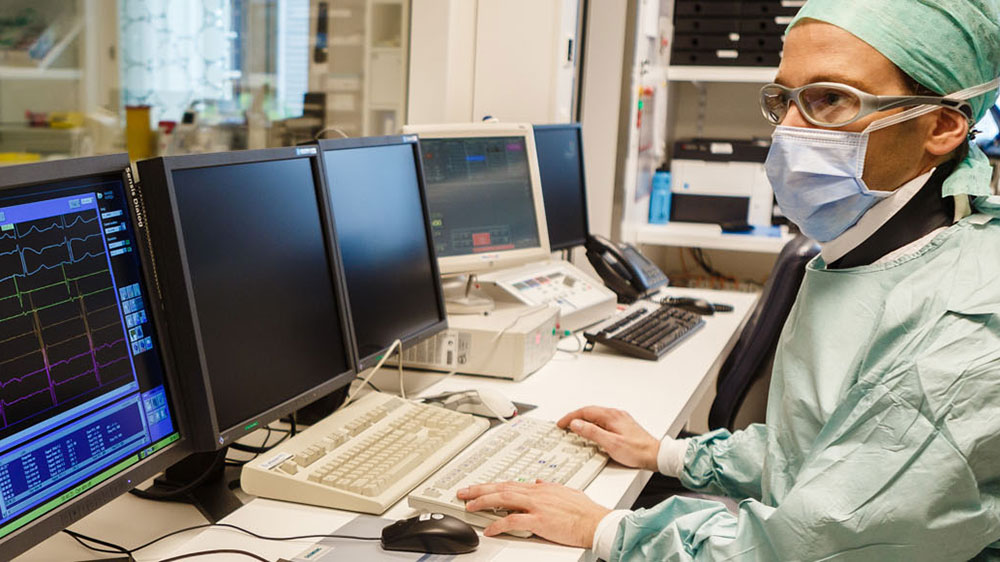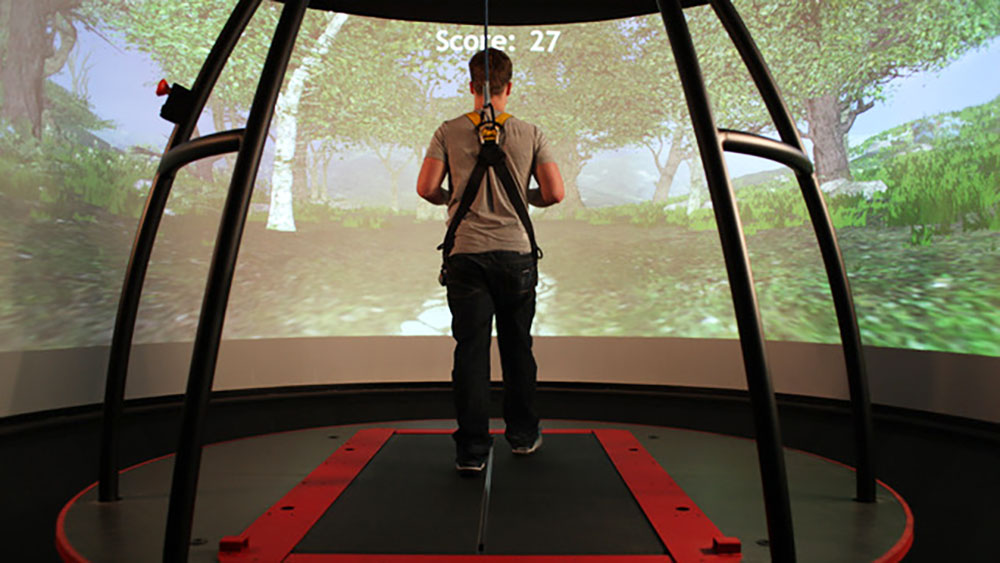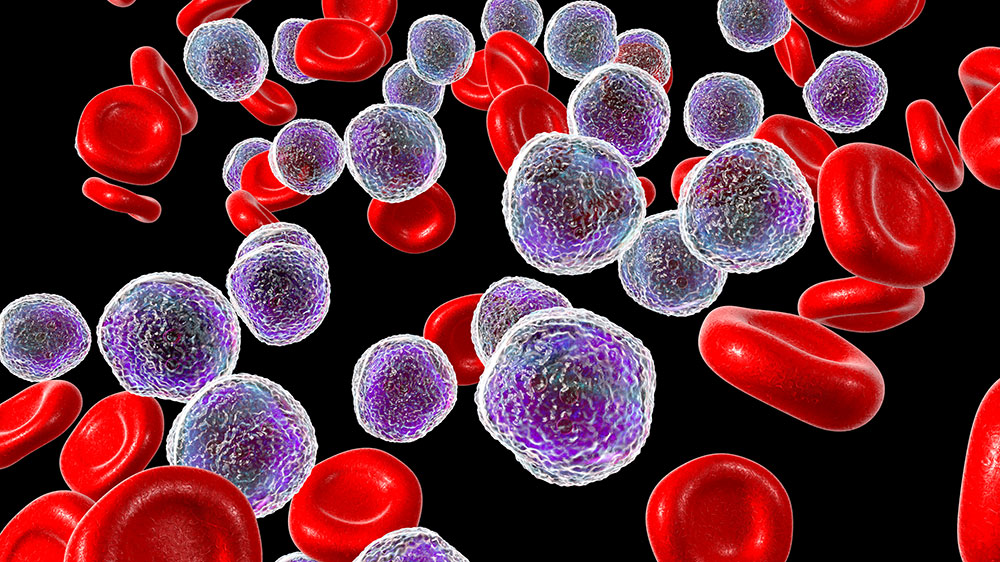Targeted Therapies thanks to Biomedical Informatics
Patients differ. The more precise the diagnosis and the more targeted the therapy, the better the individual needs of patients can be met. This is the goal of The LOOP Zurich. The new translational research center wants to improve our basic understanding of diseases to develop therapies that are tailored to the individual. To this end, it combines basic research in biomedicine and bioinformatics from the University of Zurich (UZH) and ETH Zurich with clinical research from the University’s four hospitals – the UniversityHospital Zurich (USZ), the University Children’s Hospital Zurich (KiSpi), the University Hospital Balgrist and the University Hospital of Psychiatry Zurich (PUK).
The hospitals’ unparalleled access to patients and the combined research infrastructures at UZH and ETH provide The Loop Zurich with a unique starting point. “We’re bringing together the best researchers in biomedical research, clinical research and bioinformatics to conduct innovative research together,” says Beatrice Beck-Schimmer, Vice President Medicine at UZH. Detlef Günther, Vice President for Research at ETH Zurich and Chair of the Executive Board of the University Medicine Zurich initiative, adds: “We have the basic research, innovative diagnostics and specialist knowledge in handling medical data to frame and answer excellent scientific questions together. If we can tap into the interdisciplinary potential of The LOOP Zurich, we will also succeed in bringing the benefits of innovation to patients in the clinics as quickly as possible.” The cooperation is expected to bolster precision medicine at the Zurich research hub.
Built on biomedical informatics
One of the new center’s core competencies is in biomedical informatics. To develop bespoke therapies for patients, the research center wants to use improved data analysis and data modeling to gain new insights in diagnostics, therapy and prevention.
The involved institutions have large data collections, but they don’t yet share the research infrastructure needed to exchange and benefit from this medical data in a suitable way. This is set to change with the center’s new biomedical informatics platform, which will be based on the standards of the Swiss Personalized Health Network, the Swiss government’s initiative to make health data interoperable and accessible for research. The new platform will make previously unused data available for use in clinical decision support systems.
First focal points defined
The center recently launched the first two research consortia, each funded to the tune of CHF 5 million over the next five years (see below). The researchers involved will work hand in hand to develop novel precision therapies in the fields of oncology and neurorehabilitation. “The projects were chosen for their scientific excellence, and because Zurich has proven specialist knowledge in these areas. This allows us to take on an important role internationally,” explains Markus Rudin, Founding Director of The LOOP Zurich.
Personalized rehabilitation for stroke and Parkinson’s patients
The research consortium StimuLOOP led by Professor Andreas Luft (UZH) and Professor Roger Gassert (ETH) explores motor rehabilitation in stroke and Parkinson’s patients. “We want to use personalized rehabilitation therapies to improve the patients’ movement in the long term,” says neurologist Andreas Luft.
Two clinical trials are planned, each with around 50 stroke or Parkinson’s patients testing new training and consolidation methods. The researchers intend to use virtual reality to correct deficits in the stroke patients’ gait, e.g. restricted flexion of the knees. This involves the subjects exploring virtual surroundings while on a treadmill and receiving targeted feedback to enable their movement to return to normal. In the second phase of the study, the patients’ newly acquired walking skills will be consolidated. This will be done by monitoring and modulating the subjects’ sleep, as previous studies conducted in Zurich have demonstrated that deep sleep improves patients’ consolidation processes. Here the researchers will use portable technology from the Sleep Loop, one of the University Medicine Zurich’s flagship projects.
In contrast, the training method for Parkinson’s patients relies on deep brain simulation through implanted electrodes. The study will allow patients to observe the targeted nerve signals in the lab in front of a computer, and to then learn how to influence these signals through neurofeedback. By specifically regulating their brain activity while awake, the patients can quickly improve their gait and mobility. As with the stroke patients, they too will consolidate their newly learned motor skills using sleep modulation.
Some of the individual rehabilitation methods have already been tested in smaller studies. “We now have the opportunity to test them in a more comprehensive context that will give us a bigger picture,” says Andreas Luft. By collecting the same type of data for both groups of patients, it will be possible for the first time to compare the gait and learning processes of stroke and Parkinson’s patients.
The project brings together researchers and clinical therapists from UZH, ETH Zurich, USZ and KiSpi from a variety of fields, including neurosciences, neurorehabilitation, sleep research, medical informatics, biomechanics and neuroengineering.
Precision treatments for blood cancer patients
From intensive chemotherapy to novel types of immunotherapy such as CAR T-cell therapy, a wide range of treatments is available to children or adults suffering from lymphoma, malignant lymphocytes in the lymph nodes or bone marrow, or acute lymphoblastic leukemia (ALL). Thanks to these diverse treatment options, the outlook of patients suffering from these diseases has improved considerably. Unfortunately, in many cases the cancer may reappear because patients are not responding to the treatments sufficiently. It is not yet known exactly which cancer drugs are the right ones for each patient. There is thus a great need for researchers to optimize treatment selection for blood cancer patients. This is where the INTeRCePT research project co-led by UZH hematology professor Thorsten Zenz comes in.
The research consortia has mapped out a three-year observational study with around 50 patients who are being treated at KiSpi or USZ, and who have experienced a relapse of ALL or aggressive lymphoma. Before the patients’ treatments, the researchers will extract cancer cells and cultivate them in the lab. These cell cultures will be tested with the same medications that are given to the patients. The study will then compare the results from the lab with the patients’ clinical progress to develop a predictive method.
What’s new is that the scientists will investigate the biomolecular reactions in ultra-high resolution at the level of individual cells. “This will help us understand the heterogeneity of tumor and normal immune cells, and their interactions,” explains Thorsten Zenz. The goal is to use this method to test all approved cancer drugs for leukemia and lymphoma. Using computational analysis, the scientists will create a detailed map that illustrates which cells respond in which way to the drug’s active ingredients – and thus improve predictions about the effects of the drugs. A subsequent clinical study will then test the drugs with the best predictive scores with the aim of increasing their response rate by 50 percent. “We hope that many other research groups will be able to benefit from our data,” says Thorsten Zenz.
The research project is highly complex and requires an interdisciplinary approach, with researchers from the fields of medical oncology and hematology, molecular biology, immunology, systems biology, bioinformatics, pediatric oncology in Zurich as well as experts from the European Molecular Biology Laboratory (EMBL) working closely together.


